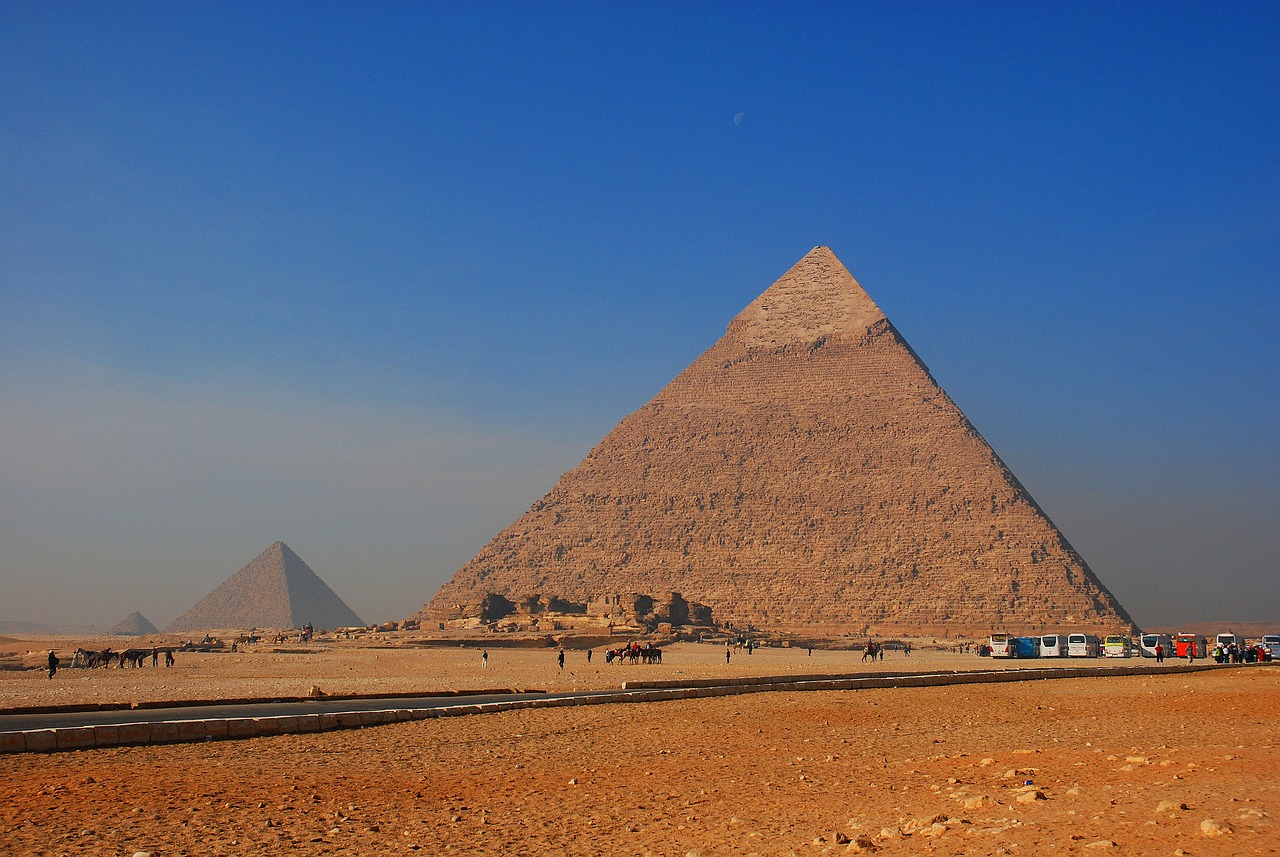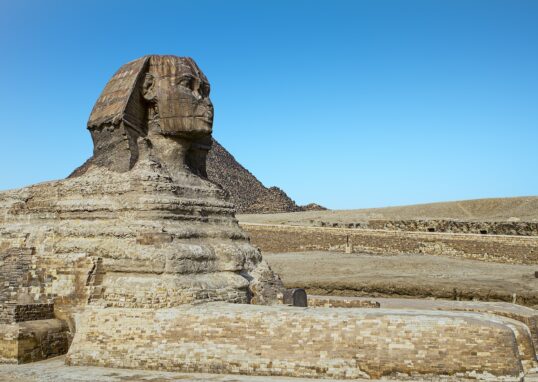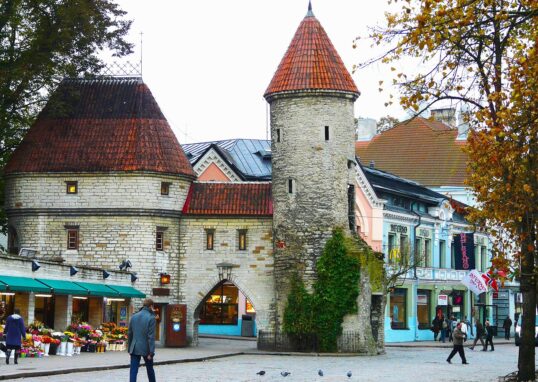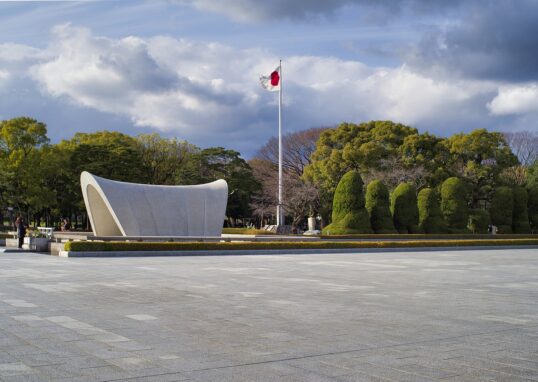
Where the Sphinx Guards Forgotten Secrets: The Pyramids’ Enigmatic Gaze
The Giza Pyramids are a famous and timeless symbol of the ancient world. This structure is placed on the Giza Plateau, near Cairo, in Egypt. These massive tombs were built more than 4,500 years ago, in the Old Kingdom, the golden age of Egypt. And now, they are among the most recognizable ones in the world, standing as an eternal witness to this ancient culture. As we delve deeper into the subject of prehistoric times, we realize the vital role these pyramids have played for archaeologists, historians, astrophysicists, and tourists alike, who have all been inspired by the majestic power of these structures that once celebrated human ingenuity.
Pyramids of Giza, Cairo, Egypt
The Giza natural reserve includes three primary pyramids, those of Khufu (Cheops), Khafre (Chephren), and Menkaure, as well as the Great Sphinx, numerous small pyramids, temples, and other ancient structures. The Great Pyramid of Khufu, the largest of the seven wonders of the ancient world and the only survivor, is the Giza plateau’s main attraction, attracting historians and travelers equally.
The Great Sphinx, a huge limestone statue of a lion’s body and the head of a pharaoh, and the pyramids add to the mystery behind the place. Visitors can see the pyramids’ interiors, though some parts are off-limits, and marvel at their accuracy and scale. The Solar Boat Museum, located near the Great Pyramid, houses a reconstructed ancient vessel believed to have been used by Pharaoh Khufu in the afterlife.
Key Attractions
Great Pyramid of Khufu (Cheops)
Largest Pyramid
One of the three largest, the Great Pyramid, was built and originally stood 146.6 meters (481 feet) high.
Interior Chambers
The pyramid’s design suggests the King’s Chamber, the Queen’s Chamber, and the Grand Gallery.
Beyond the pyramid, there are also crowds to detect nearby. The Giza plateau is a wide archaeological site that includes several graves, temples, and small pyramids to study. Valley Temple of Khafre provides insight into the Morchari rituals in ancient Egypt, with large stone plates and magnificent carvings. A short drive from Giza takes you to Saqqara, where the Step Pyramid of Djoser, the oldest stone pyramid in the world, rises in Egypt. Saqqara and the nearby Memphis, the ancient Egyptian capital, give a better understanding of the evolution of the art of pyramid construction and early Egyptian society.
Pyramid of Khafre (Chephren)
Second-Largest Pyramid
The Pyramid of Khafre is the Great since it is placed on higher ground.
Valley Temple
Connected to the pyramid by a causeway, the Valley Temple was used for the pharaoh’s mummification process.
Pyramid of Menkaure
Smallest of the Three
The Pyramid of Menkaure is the smallest of the three main pyramids, originally standing 65 meters (213 feet) high.
Complex Layout
Surrounding the pyramid are three smaller subsidiary pyramids, believed to be for Menkaure’s queens.
The Great Sphinx of Giza
Monumental Sculpture
The Great Sphinx is an enduring conundrum, standing 20 meters (66 feet) high and 73 meters (240 feet) long.
Symbolism and Mystery
The purpose and symbolism of the Sphinx remain subjects of debate.
Solar Boat Museum
Ancient Boat
One of the museums is the Solar Boat Museum, located in Giza near the Pyramids of Giza. It is home to the Khufu Solar Boat, a ship that was buried near the pyramid to serve the pharaoh in the afterlife and later restored.
Cultural and Historical Significance
Royal Tombs
The pyramids were built as monumental tombs for the pharaohs, considered gods on Earth.
Architectural Marvels
The construction techniques used to build the pyramids have been a subject of fascination and study.
Symbol of Egypt
The Pyramids of Giza have become a global symbol of Egypt and one of the Seven Wonders of the Ancient World.
Practical Information
Best Time to Visit
The best time to visit the Pyramids is between October and April, when the weather is cooler. The pyramids are located just outside Cairo, 20 kilometers (12 miles) to the southwest. If you’re traveling to Egypt in the foreseeable future, wear conservative attire and sneakers since the ground may be uneven and you have to walk a lot. The Most Important Thing to Remember about the Prehistoric Site: It was necessary to respect the ancient design and construction materials by not climbing or touching them. Photography is allowed, but no drones.
In Cairo, the Egyptian Museum is a shop with objects such as Tutankhamun’s golden mask and thousands of relics from old graves. The Islamic bazaar Khan al-Khalili market in Cairo provides a living setting where tourists can buy traditional crafts, spices, and souvenirs and immerse themselves in the city’s rich cultural heritage.
Evening Sound and Light Show
Spectacular Display
Every night, one can watch a sound and light show at the Pyramids of Giza, with a mesmerizing soundtrack that speaks of the golden era of Egypt during which the old Pharaohs ruled. The event assigns a new visual dimension to history that excites the visitor to the max, transforming otherwise lifeless legends into a vivid reality.
The Pyramids of Giza are the ancient symbols that are a part of Egyptian culture, and they were among the Seven Wonders of the Ancient World. Mainly, they fascinate tourists with their vast size and significance in the history of the world. During the Fourth Dynasty of the Old Kingdom, between 2580 and 2560 BC, the Great Pyramid of Giza, also identified as the Pyramid of Khufu or Cheops, was one of the largest and the three most famous pyramids then. The height was 146.6 meters when it was first built. The allotment, the quality of the handling, and the use of the coming 2.3 million limestone blocks, weighing the following, demonstrate the excellent engineering skills of the ancient Egyptians. The Great Pyramid is circled with the Pyramids of Khafre and Menkaure, two smaller ones, and the mysterious Great Sphinx, a limestone statue looking like a lion in body and the head of a pharaoh, which, no doubt, the head of a pharaoh, which adds to the mystical allure of the site.
The Nile River, Egypt’s lifeline, offers relaxed felucca sailing or luxurious dinner cruises with stunning views of Cairo’s skyline. The Cairo Citadel, a medieval Islamic fort, and the Mosque of Muhammad Ali are some notable landmarks that tell the city’s story.
Visitors to the Pyramids
People visiting the Pyramids of Giza often have a strong feeling of historical knowledge and amazement that fills the environment as they get close to these huge buildings, which have witnessed the ages for over 4,500 years. The experience starts with the classic image of the pyramids rising from their sandy surroundings, backed by the busy city of Cairo, thus creating a dramatic contrast between the scenes of old and modern life. Many tourists can choose to go to the place by walking through the clear paths made in good condition that lead to every pyramid, where they can perceive the finesse of the art of stonemasonry and imagine the hard physical work that went into their making. As we turn to the tours, a guide or a guidebook can be enlisted to deliver the location details, discuss its historical roots and cultural throes, mythologies, and even the reasons for the majestic structures, thus making the overall experience complete.
In the Great Pyramid, visitors can go through the narrow corridors to the King’s Chamber and the Queen’s Chamber, which are maintained by cobwebs of nature-driven clusters. When the interior atmosphere is not complicated like an environment, visitors go out to feel the green pastures as the weight of history is over the place. Despite the inside of the pyramid having fewer decorative elements than the external one, the feeling of the place being a structure that has been here for thousands of years is impressive. No doubt, the mighty Pyramids of Giza are proof of the architectural and engineering skills that the ancient Egyptians had, but they also reveal their faith in life after death. They were built as big tombs for the pharaohs, and made sure they got to the next world after they died.
The site is beyond the pyramids; it is a series of more private temples, including small pyramids for queens and the nearby Sphinx, the guard sent by the gods to protect the pyramids. The Sphinx’s mystery and magic open with its human-tale-like body, like a character from a legend in a book everyone wants to read. Travellers also visit another ancient place, Wadi Rum, a stunning desert scene worldwide. It covers around 720 square kilometers of eye-catching desert land in southern Jordan. You’ll see red dunes, massive sandstone cliffs, and shaped rocks.
Conclusion
The Pyramids of Giza don’t exist, just ancient buildings, but the fact that they are the imprint of one of the most ancient, most religious, and strongest in the world’s history stands as proof of the intelligence, belief, and strength of the people who made them. The funerary complexes let us in on the history and give us the possibility to take part in it. The Great Pyramid, the megalithic temple, with a bit of stretching between its walls, the abstract art, and the monolithic image of the Sphinx, the last in Egypt and worldwide, is an attraction that sparks. The Pyramids of Giza and the surrounding areas offer an Egypt travel to ancient as well as modern history. From marveling at the enormity of the pyramids, tracking the ancient burial grounds, to experiencing Cairo’s energy culture, this region offers a once-in-a-lifetime experience reminiscent of Egypt’s eternal beauty.










